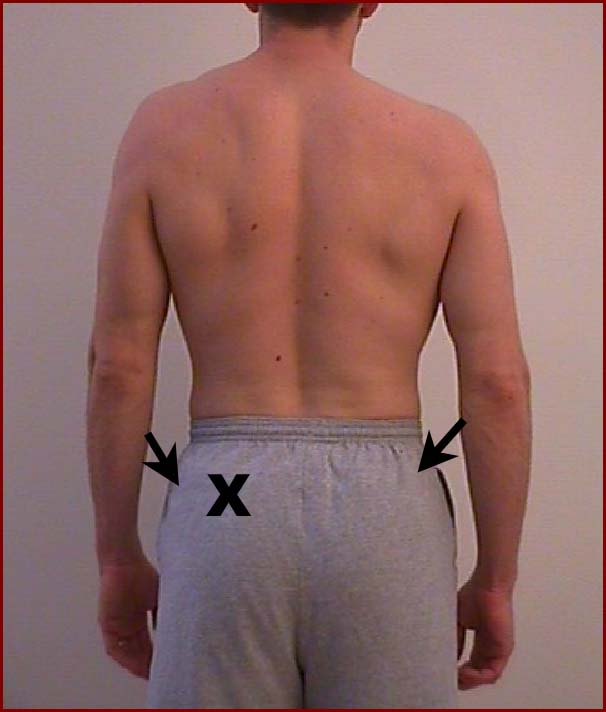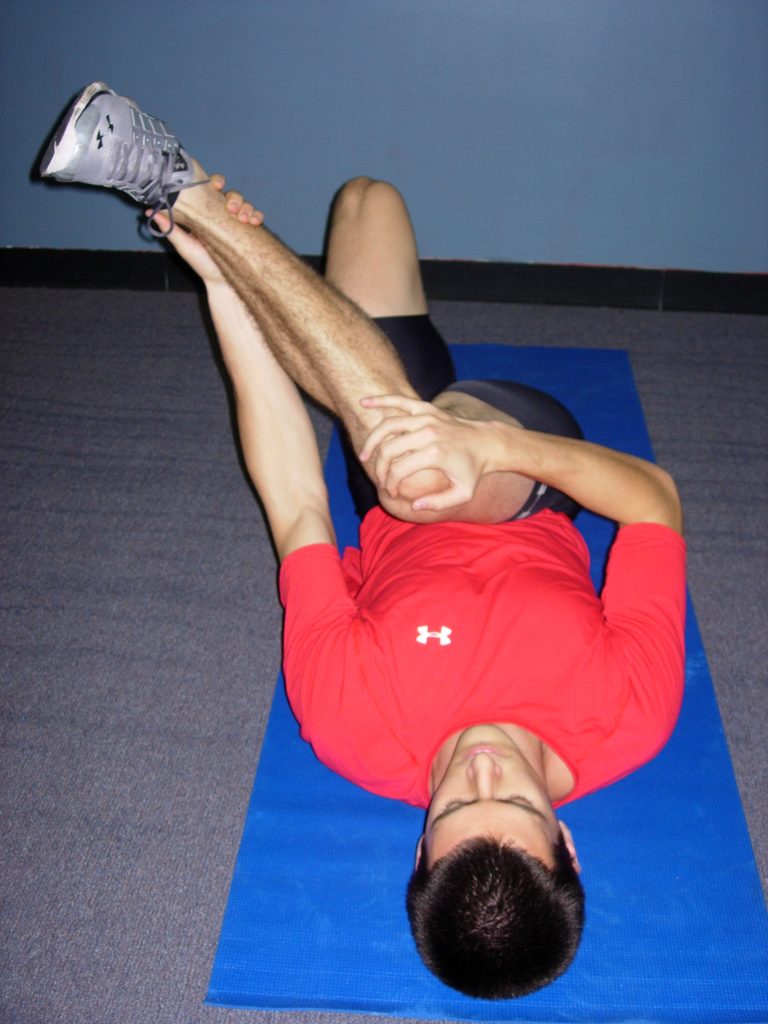A stretch for sciatica pain has been given by many doctors, physical therapists, and massage therapists, however their success has been limited.
A physician I was speaking to told me “there aren’t any successful treatments for sciatica!” and I told him…”yes there is, I’ve been teaching it for years!”
We went back and forth a few times and he finally asked me to come to his office and talk to him about how muscles cause pain. That was the beginning of a long relationship of treating patients who were in pain and suffering for reasons he couldn’t place on a medical condition.
The missing link is releasing the knots that are putting the strain on the sciatic nerve before stretching. This is the case with pain throughout the body, but for today we’ll focus on stretching for sciatica.

The stretch for sciatica is frequently focusing on the piriformis muscle.
The piriformis muscle is marked with an “x” on this photo. It originates on your sacrum (at about the location of the “x”) and inserts into the top of your thigh bone (down from the arrows)
The piriformis muscle crosses over the sciatic nerve so it is one of the muscles that needs to be stretched, but there are more muscles involved in this situation.
In previous blogs I’ve written about the muscles that pull your body forward and lift your legs so you can sit down or walk up steps, and I’ve written about the back muscles that pull your posterior pelvis up so you can move your legs. If you missed these blogs I suggest you take a look for them as they contain a great deal of information about each muscle and how they rotate your pelvis and cause a list of problems, including sciatica.
As these muscles cause your pelvis to rotate down in the front, it is rotating UP in the back and pressing the bone directly into your sciatic nerve – and simply stretching isn’t the answer. The answer is to first do the treatments that will release the spasms in your muscles so your pelvis can rotate back to where it belongs and take the bone off the nerve.
When a spasm, also called a knot or trigger point, forms in the muscle fibers it causes the fibers to shorten. If you try to stretch the muscle without first releasing the spasm you will cause the knot to become more involved, and you’ll overstretch the fibers outside of the spasm.
Consider this analogy, if you had a line that was 12″ long and you tied enough knots in it so it was 10″ long, then you stretched it, what would you do? The knot would become tighter and the fibers outside of the knot would overstretch to get the line back to 12″.
If you already have Treat Yourself to Pain-Free Living or The 15 Minute Back Pain Solution you know the treatment for each of the muscles that rotate your pelvis, and you also have the treatment for the piriformis muscle.
Stretch for Sciatica

tretch both sides of your body, even if you are only feeling sciatica pain on one side.
Lie on your back with both knees bent. During this stretch it is important to keep your back completely on the floor.
Bring your knee up toward your chest, as close to midline as possible, and even moving more toward the opposite side if possible.
You will already feel a stretch in your butt because you are stretching both your piriformis muscle and also your gluteus maximus which is the major muscle that forms your butt.
Use your same side hand to push your knee over toward the opposite side, and then use your opposite hand to hold your ankle and straighten your leg as much as possible.
Hold the stretch for 30 seconds while continuing to push your knee further to the opposite side to enhance the stretch.
Stretching for sciatica does work! But, it works much better, with longer lasting results, when you first treat the muscles that caused the problem in the first place.
Wishing you well,
